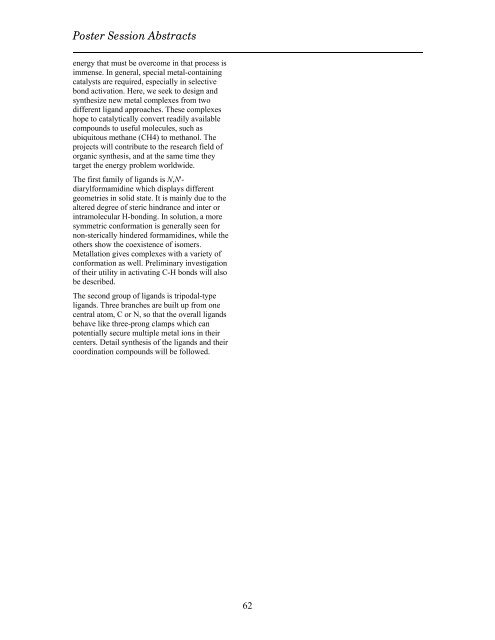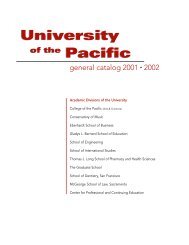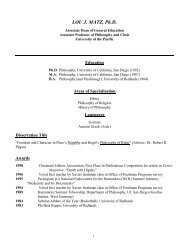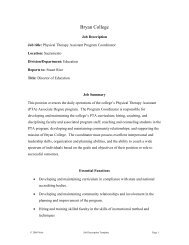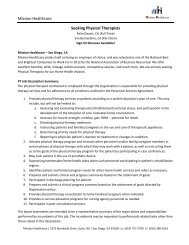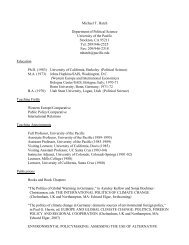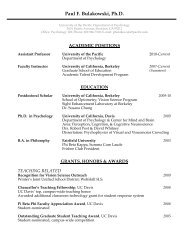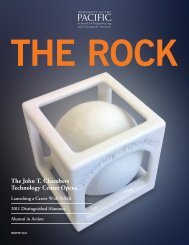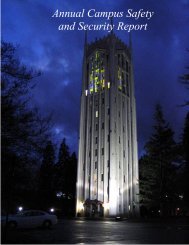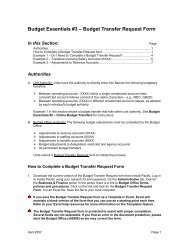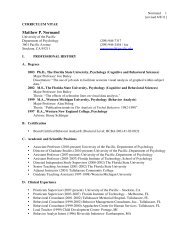purcc 2012 - University of the Pacific
purcc 2012 - University of the Pacific
purcc 2012 - University of the Pacific
You also want an ePaper? Increase the reach of your titles
YUMPU automatically turns print PDFs into web optimized ePapers that Google loves.
Poster Session Abstracts<br />
energy that must be overcome in that process is<br />
immense. In general, special metal-containing<br />
catalysts are required, especially in selective<br />
bond activation. Here, we seek to design and<br />
syn<strong>the</strong>size new metal complexes from two<br />
different ligand approaches. These complexes<br />
hope to catalytically convert readily available<br />
compounds to useful molecules, such as<br />
ubiquitous methane (CH4) to methanol. The<br />
projects will contribute to <strong>the</strong> research field <strong>of</strong><br />
organic syn<strong>the</strong>sis, and at <strong>the</strong> same time <strong>the</strong>y<br />
target <strong>the</strong> energy problem worldwide.<br />
The first family <strong>of</strong> ligands is N,N'-<br />
diarylformamidine which displays different<br />
geometries in solid state. It is mainly due to <strong>the</strong><br />
altered degree <strong>of</strong> steric hindrance and inter or<br />
intramolecular H-bonding. In solution, a more<br />
symmetric conformation is generally seen for<br />
non-sterically hindered formamidines, while <strong>the</strong><br />
o<strong>the</strong>rs show <strong>the</strong> coexistence <strong>of</strong> isomers.<br />
Metallation gives complexes with a variety <strong>of</strong><br />
conformation as well. Preliminary investigation<br />
<strong>of</strong> <strong>the</strong>ir utility in activating C-H bonds will also<br />
be described.<br />
The second group <strong>of</strong> ligands is tripodal-type<br />
ligands. Three branches are built up from one<br />
central atom, C or N, so that <strong>the</strong> overall ligands<br />
behave like three-prong clamps which can<br />
potentially secure multiple metal ions in <strong>the</strong>ir<br />
centers. Detail syn<strong>the</strong>sis <strong>of</strong> <strong>the</strong> ligands and <strong>the</strong>ir<br />
coordination compounds will be followed.<br />
62


